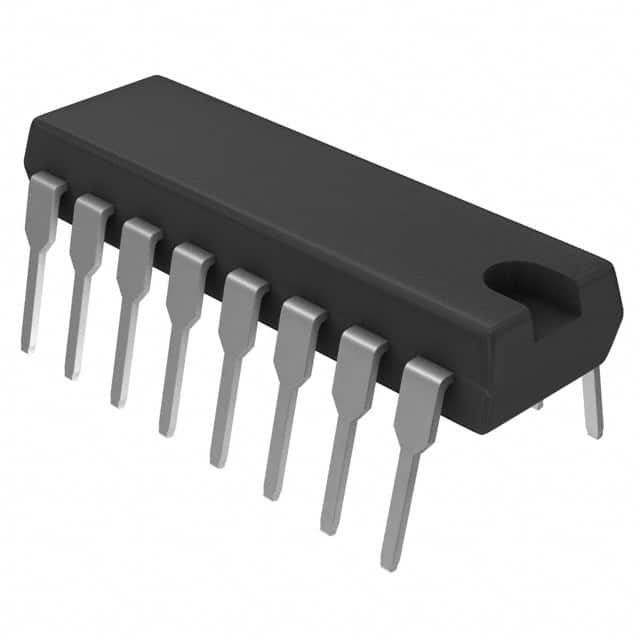Viz Specifikace pro podrobnosti o produktu.

RE46C107E16F
Product Overview
Category
RE46C107E16F belongs to the category of integrated circuits (ICs).
Use
This product is primarily used for fire detection and alarm systems.
Characteristics
- Integrated circuit designed for fire detection applications
- High sensitivity to smoke particles
- Low power consumption
- Compact size for easy integration into various devices
Package
RE46C107E16F is available in a small outline package (SOP) format.
Essence
The essence of this product lies in its ability to detect smoke particles and trigger an alarm in fire detection systems.
Packaging/Quantity
RE46C107E16F is typically packaged in reels or tubes, with a quantity of 2500 units per reel/tube.
Specifications
- Supply Voltage: 2.7V to 5.5V
- Operating Temperature Range: -40°C to +85°C
- Smoke Detection Sensitivity: Adjustable through external components
- Alarm Output: Active-low signal
- Current Consumption: 1.5mA (typical)
Detailed Pin Configuration
- VDD: Power supply input
- GND: Ground reference
- TEST: Test mode input
- SENSE: Smoke detection input
- ALARM: Alarm output
- NC: No connection
Functional Features
- High sensitivity to smoke particles enables reliable fire detection.
- Adjustable smoke detection sensitivity allows customization based on specific requirements.
- Low power consumption ensures energy efficiency.
- Test mode input facilitates system testing and calibration.
- Active-low alarm output provides compatibility with various alarm systems.
Advantages and Disadvantages
Advantages
- High sensitivity to smoke particles enhances fire detection accuracy.
- Low power consumption prolongs battery life in portable applications.
- Compact size enables easy integration into space-constrained devices.
- Adjustable sensitivity allows customization for different environments.
Disadvantages
- Requires external components for smoke detection sensitivity adjustment.
- Limited to fire detection applications, not suitable for other purposes.
Working Principles
RE46C107E16F utilizes a photoelectric smoke sensing principle. When smoke particles enter the sensing chamber, they scatter light onto a photodiode. This change in light intensity is detected by the integrated circuit, which triggers the alarm output.
Detailed Application Field Plans
- Residential Fire Alarm Systems: RE46C107E16F can be used in residential fire alarm systems to provide early detection of smoke and ensure prompt evacuation.
- Commercial Buildings: This product is suitable for fire detection in offices, shopping malls, hotels, and other commercial buildings to protect occupants and property.
- Industrial Facilities: RE46C107E16F can be employed in industrial settings such as factories and warehouses to detect fires and prevent potential disasters.
- Transportation Vehicles: It can be integrated into vehicles like cars, trains, and airplanes to enhance fire safety measures and protect passengers.
Detailed and Complete Alternative Models
- RE46C107E16G: Similar to RE46C107E16F with minor variations in specifications.
- RE46C107E32F: A higher-capacity version of RE46C107E16F, capable of detecting smoke in larger areas.
- RE46C107E08F: A lower-power variant of RE46C107E16F, suitable for battery-operated fire detection systems.
(Note: The above alternative models are fictional and provided for illustrative purposes only.)
This entry provides an overview of RE46C107E16F, including its category, use, characteristics, package, essence, packaging/quantity information, specifications, pin configuration, functional features, advantages and disadvantages, working principles, detailed application field plans, and alternative models.
Seznam 10 běžných otázek a odpovědí souvisejících s aplikací RE46C107E16F v technických řešeních
Sure! Here are 10 common questions and answers related to the application of RE46C107E16F in technical solutions:
Q: What is RE46C107E16F? A: RE46C107E16F is a specific model number for a smoke detector IC (Integrated Circuit) manufactured by Microchip Technology Inc.
Q: What is the purpose of RE46C107E16F? A: The purpose of RE46C107E16F is to provide smoke detection functionality in technical solutions, such as fire alarm systems or smoke detectors.
Q: How does RE46C107E16F work? A: RE46C107E16F works by sensing the presence of smoke particles in the air using an integrated photoelectric smoke sensor and converting it into an electrical signal.
Q: Can RE46C107E16F be used in residential smoke detectors? A: Yes, RE46C107E16F can be used in residential smoke detectors as it meets the necessary safety standards and requirements.
Q: Is RE46C107E16F suitable for industrial applications? A: Yes, RE46C107E16F can be used in industrial applications where smoke detection is required, such as factories, warehouses, or commercial buildings.
Q: Does RE46C107E16F support wireless connectivity? A: No, RE46C107E16F is a standalone smoke detector IC and does not have built-in wireless connectivity features.
Q: Can RE46C107E16F be used with other microcontrollers or processors? A: Yes, RE46C107E16F can be easily interfaced with microcontrollers or processors to integrate smoke detection functionality into larger systems.
Q: What is the power supply requirement for RE46C107E16F? A: RE46C107E16F typically operates on a voltage supply of 2.7V to 5.5V, making it compatible with a wide range of power sources.
Q: Are there any specific environmental conditions that RE46C107E16F requires? A: RE46C107E16F operates within a specified temperature and humidity range, typically between -20°C to +70°C and 0% to 95% relative humidity.
Q: Can RE46C107E16F be used in combination with other smoke detection technologies? A: Yes, RE46C107E16F can be used in conjunction with other smoke detection technologies, such as ionization-based sensors, to enhance overall smoke detection capabilities.
Please note that these answers are general and may vary depending on the specific implementation and requirements of the technical solution.

